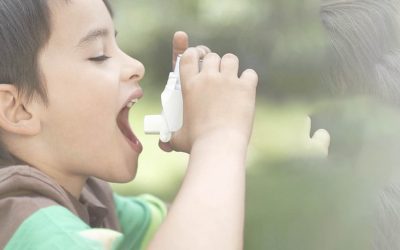Food allergies are present in 8-10% of children. It is one of the most common things I see in the emergency department, and these allergies appear more frequently every year.
Common types of food allergies:
- Cow’s milk – approximately 2-3% of infants up to one year in age are allergic to proteins in both cow’s milk and cow’s milk formula. Dairy allergy symptoms are identical to other food allergies, but can include bloody diarrhea. We call this cow’s milk protein allergy. In some instances, children will experience cow’s milk allergy into adulthood.
- Eggs – Eggs are a common allergen in young children. However, many children will outgrow egg allergies.
- Fish and shellfish – Most children will not outgrow these allergies. Some kids will be allergic to fish or shellfish, but not necessarily both.
- Peanuts and tree nuts – Peanuts are legumes, though many children with peanut allergy will also be allergic to tree nuts (e.g. cashews, almonds and pecans). The number of kids with one or the other or both of these allergies is on the rise.
- Soy – Soy is a legume as well. Soy allergy is most common in infancy and toddlers. Fortunately, many children outgrow it.
- Wheat – A true allergy to wheat is not the same as Celiac disease; it is more rare and causes the same symptoms as other food allergies.
Symptoms of food allergy involve:
- Food allergy rash – Hives typically
- Swollen or itchy tongue
- Cough or trouble breathing
- Diarrhea, vomiting or abdominal pain
- Facial swelling
- Change in blood pressure or heart rate
- Loss of consciousness
If you have more than one of these symptoms, call 911! Children experiencing two or more of these symptoms may have anaphylaxis, a life threatening allergic reaction.
In general the way to avoid an allergic reaction is to strictly avoid the allergic food in question. There are new ways being researched now that involve systematic desensitization to food allergens. For example, eating small amounts of peanut butter every day may prevent a dangerous allergic reaction. Please talk to your doctor about this research.
What should my child with food allergies have on hand?
- EpiPen/Allerject – Life saving! A dose of adrenaline from these devices during an anaphylactic episode can mean the difference between life and death.
- Medic-Alert bracelet – Imagine that your child has an anaphylactic reaction and his or her throat closes. It may be difficult to tell someone to give the EpiPen. But if the child is wearing a bracelet or necklace that warns of the life threatening allergy, this may cue a passerby to perform the necessary treatment.
- Benadryl – I only recommend using Benadryl where there are symptoms of hives alone. If there are hives and any other system is involved (e.g. swelling, vomiting, diarrhea, belly pain, faintness, difficulty breathing, etc), please use the EpiPen.










